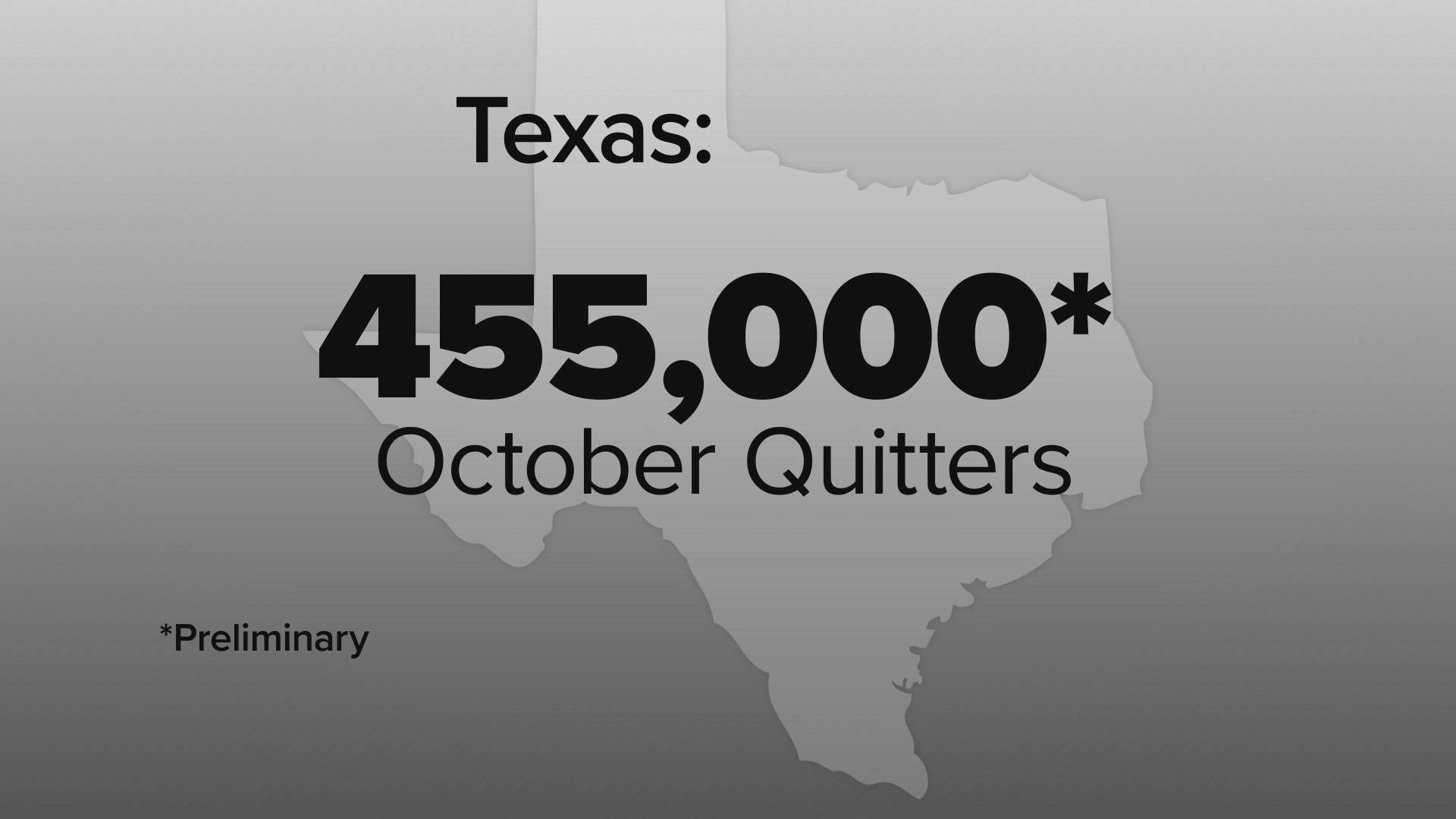DALLAS — I recently reported that Texas had almost become the "quitting capital" of the country. Preliminary numbers from the Bureau of Labor Statistics had pegged Texas just behind more populous California for the number of workers who had quit their jobs in September.
In its initial figures for that month, the BLS showed Texas had 439,000 job quitters and California had 443,000.
Texas is now "Quitter, USA"
Now, revised — final — numbers show that Texas actually (by far) had become "Quitter, USA" in September, the state racking up 440,000 job quits that month to California’s revised 400,000.
On top of that, the BLS has now come out with preliminary data for October, and the surge in job quitting in Texas is gaining momentum.
The Lone Star State again led the nation in the number of employees calling it quits, with an estimated 455,000 Texans leaving their jobs just in that month.
That upward lurch in the total of Texas workers voluntarily leaving their jobs in October comes in contrast to preliminary numbers for the country as a whole, which saw a deceleration in quitting in October after setting all-time highs several times this year.
Even more quits coming in 2022?
Employers, who have had historic challenges this year holding on to their workers and attracting new talent are not going to want to read this, but a new survey by PricewaterhouseCoopers finds 65% of employees are looking for a new job.
That's a huge percentage. Think about that: two out of every three people you work with - trying to leave.
That number sounds high. But some of that could be "soft searching." I have long said that all of us in the workforce should always be at least kind of looking for new opportunities; making contacts and seeing what's out there - because you never know what is around the corner.
So, where to from here? While PWC is finding that huge percentage of workers looking for new jobs, there's a big talent and staffing firm called Robert Half that has been tracking this, too.
They show that 41% of workers are looking to switch jobs. That number is lower than PwC's, but it still an impressive figure. And they take us down to the metro level. And their big takeaway is that turnover locally is only going to accelerate in the first half of next year.
For example, back in the summer of 2021, they found 38% of workers in Dallas were looking to leave for another job. That number ticked up even higher, to 40%, when they asked people if they are considering a change in employment between now and next summer.
Robert Half shared the big reasons people in Dallas are searching, and these are common nationwide, too: 48% are looking for more money, 40% want better benefits and perks, and 40% want the ability to work remotely.
Why are workers quitting? And what should employers do to hang onto them?
On that note, is there an inverse pattern here? According to the BLS, the percentage of people able to work remotely has steadily gone down as the number of people quitting has steadily gone up.
In May of 2020, 35.4% of employees reported being able to work from home because of the pandemic. By October of this year, that had shrunk to just 11.6% able to work from home because of the pandemic.
That may be somewhat instructive to employers who are looking for ways to hold on to their workers.
Both the PwC survey and this blog from Robert Half offer insight and advice on retaining workers as the quitting frenzy continues.

